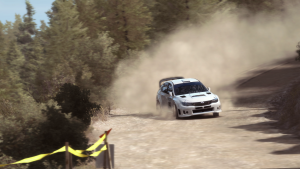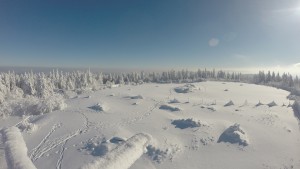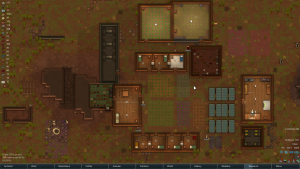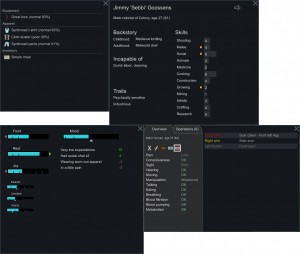A small virtual racing community
During my ongoing literature review I often discover interesting facts about things I’ve never thought about. Sometimes I can connect these facts with my own observations: The result is mostly a completely new idea why things are as they are. Maybe these ideas are new to you, too. Therefore I’ll share my new science based knowledge with you!
This week: This time, I think about internet based communities and present some insights on the amount of data that is being generated by a small community.
Internet based communities are not a new phenomenon. Since the early days of the internet, users started to form communities and dicussion groups in order to share information with others. Naturally, communities also evolved around computer games as players like to share their experiences and results with others, ask for help or discuss certain elements of a game.
Furthermore, some computer games allow players to form communities directly in the virtual worlds as players can join others via the internet in order to play the game cooperatively or competitively. In addition, MMORPGs like World of Warcraft allow players to join guilds and thus become a permanent part of a community that mainly exists within the boundaries of the game itself.
Finally, the emergence of YouTube created another special form of community as users can upload videos and share them with the whole world. Interested viewers can discuss the videos, become a subscriber and ultimately form a small community around the content creator.

DiRT Rally
Recently, I became a part of a small community–The Conelanders League–consisting of YouTubers and their fans who enjoy playing the racing simulation DiRT Rally. DiRT Rally provides users with the option to create own leagues and to invite friends in order to competitively race against others. The Conelanders League was initiated by ConeDodger240 in order to allow fans of KurtJMac and himself to come together and experience an exciting community event.
However, rallying takes place in form of a staged race on public or private roads. The participants consecutively race on those stages and try to complete them as fast as possible. In this case, players do not need to come together at a certain date in order to participate in a DiRT Rally league. Instead, the game just provides them with the stages they have to complete and subsequently uploads the results to a database so that the players can compare their runs.
This approach takes away the chance to see the runs of others, however. Hence, participants started to record their runs and upload them to YouTube. In addition, a small database was created to keep track of the overall standings. Personally, I am mostly impressed by the size of the community and the amount of data that has been generated so far. Moreover, the Conelanders League has also united different YouTubers and players who began to support each other.
By now, at the end of the fourth event (one event had the length of a week and consisted of 3 to 4 stages) of the Conelanders League, YouTube found „about 1800“ videos that are related to „Conelanders“ of which „about 1000“ have a length of more than 20 minutes. In addition, the standings database lists 82 participants coming from 20 different nations.
In the end, I really enjoy being part of this small community that connects the world. Moreover, it is fantastic to watch the runs of others as it resembles following a real world sports event.



